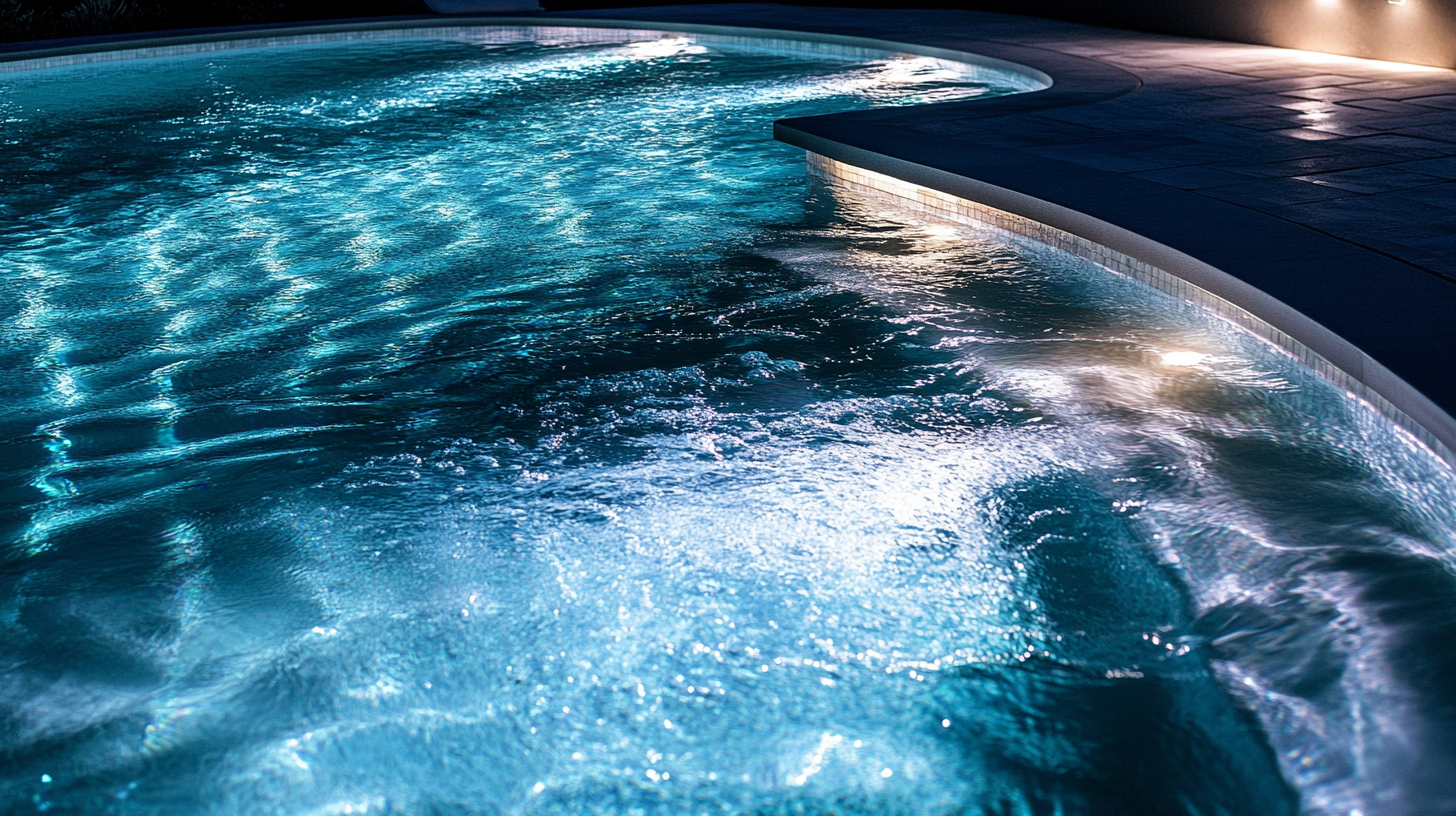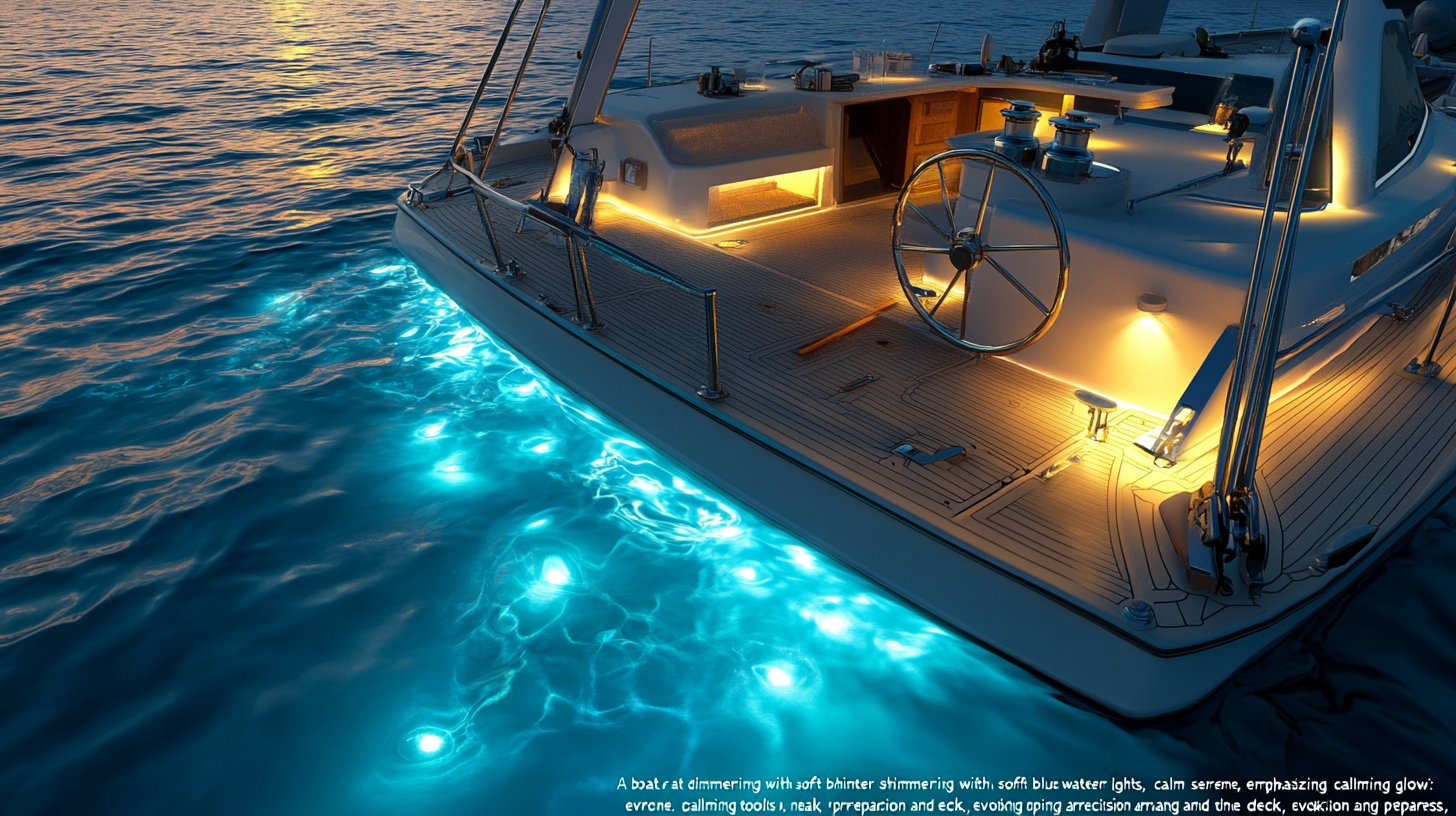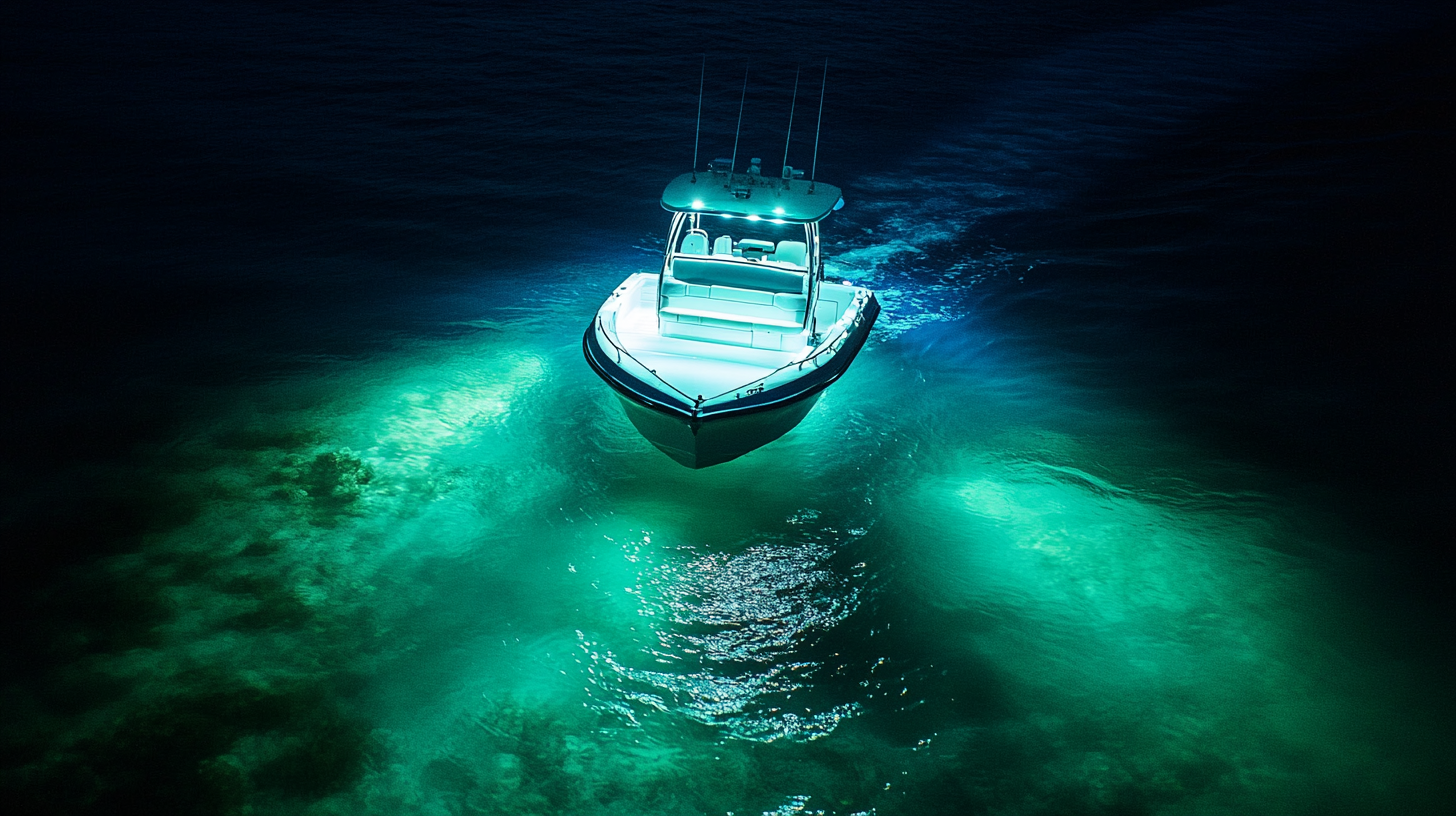The safest underwater pool lights for kids
When shopping for underwater pool lights that are safe for kids, it’s important to focus on key safety features. One of the first things to check is whether the lights are IP-rated for water resistance. A higher IP rating means that the lights are better protected against water intrusion, keeping your little swimmers safe from electrical hazards. Generally, an IP68 rating is ideal for fully submerged lighting, offering the highest level of water protection.
Another crucial safety feature is the voltage level. Low-voltage pool lights, typically operating at 12V or lower, are considered to be the safest option for pools where kids play. These lights significantly reduce the risk of electric shock compared to higher-voltage systems. Make sure to ensure that your pool’s transformer is compatible with these low-voltage systems for maximum safety.
For added peace of mind, look for pool lights with built-in thermal protection. This feature prevents overheating by automatically cutting off power when the temperature nears unsafe levels. This not only prolongs the life of the light but also keeps small hands safe from coming into contact with overheated materials. Safety certifications like UL-listed or ETL-certified are helpful indicators that the product has passed rigorous safety tests, another reason to feel more confident about installing these lights around children.
Lastly, consider using shatterproof bulbs or casings. Kids love to splash and dive, so having pool lights made from durable, impact-resistant materials prevents accidents from translating into broken glass. By prioritizing these safety features, you can create a well-lit swimming space where your children are free to enjoy the water safely.
best types of pool lights for child-friendly environments
When it comes to choosing the best types of pool lights for a child-friendly environment, there are several options designed to keep safety at the forefront while providing that magical aquatic ambiance every pool deserves. One of the most popular choices for parents is LED underwater lights. These lights run much cooler than traditional halogen options, significantly reducing the risk of burns should a child accidentally touch them. Plus, LED lights are low-voltage and energy-efficient, making them a safer and longer-lasting choice that won’t spike your utility bill.
For fun and versatility, remote-controlled lights are a hit in kid-friendly pools. These lights allow you to switch up the colors, creating vibrant, playful environments with just the press of a button. Not only do kids enjoy the colorful lighting, but parents love the convenience of being able to control the settings without needing to get wet. Some of these remote-controlled options even feature timed shut-offs, allowing you to set them to power down after a certain period, further ensuring safety by cutting off electrical access while swimming.
Flush-mounted lights are also a great option for parents looking to minimize any physical juts or protrusions in the pool walls. These lights sit nearly flush with the pool lining, reducing the likelihood of kids bumping into or catching themselves on protruding structures during their water play. Smooth, seamless designs also decrease the potential for water intrusion, contributing to the overall safety and durability of the lighting system.
For those looking to avoid electrical systems as much as possible, solar-powered pool lights are gaining in popularity. These lights don’t rely on an external power source, which can ease the mind of parents concerned about electrical risks near water. While they may not always be as bright as traditional wired lights, the innovative designs of modern solar options make them a fun and eco-friendly choice for shallow areas or steps where kids frequently play.
If you’re looking for the safest combination of esthetics and functionality, opting for lights that are magnetically attached can offer flexibility, as these lights can be repositioned or removed with ease, requiring no external wiring. They often run on low voltage, making them not only safe for kids but also easy to maintain. Perfect for above-ground pools, these lights use durable, waterproof materials, ensuring they stay securely in place while still allowing you to update and adjust the pool’s illumination whenever needed.
Lastly, fiber optic pool lighting is an excellent option for those who want to completely eliminate the chance of electrical issues in the water. The lighting sources for these setups are located outside of the pool, sending light into the water via fiber optic cables. Since there’s no electrical component inside the pool itself, it’s one of the safest choices for families with young children. While more expensive than other options, fiber optic lights offer peace of mind and a stunning visual effect that makes your pool look and feel like a calming oasis.
By choosing the right type of underwater pool lights, you can ensure that your swimming space remains a fun, colorful playground for your kids while being a worry-free zone for you.
installation tips for safe operation around kids
When installing underwater pool lights for a child-safe environment, a few key tips can make a big difference in ensuring everything remains secure and hazard-free. First and foremost, always follow the manufacturer’s installation instructions to the letter—especially when it comes to wiring. Many of the safest pool lights for kids are low-voltage, and making sure your pool’s transformer is properly set up for these lights is crucial. Incorrect connections or weak waterproofing around electrical components can pose risks, especially when kids are splashing around with no thought to water getting near the lights.
Before any installation work begins, make sure to turn off the pool’s power supply at the breaker, even if you’re dealing with low-voltage lighting. This extra precaution ensures that no current is flowing while you’re working in or around the water, reducing the risk of accidental shocks. It’s also smart to hire a certified electrician if you’re unfamiliar with pool wiring to ensure everything is double-checked for safety.
An important aspect of installing pool lights with kids in mind is the placement of the lights. Try to install them in areas where children are less likely to touch or interact with them, like at deeper parts of the pool. Avoid areas where rough play or high-traffic zones could lead to lights getting bumped or hit. Consider using flush-mounted lights or lighting that integrates seamlessly with the pool’s structure to further minimize the chances of little hands or feet coming into direct contact with the fixture.
Another aspect to keep in mind is the sealing of the lights after installation. Make sure that all components, especially the fixtures themselves, are fully waterproof and check for any potential vulnerabilities, like gaps near the wire junction or around gaskets. It’s a good idea to occasionally inspect these seals—even after installation—to catch any signs of deterioration. Over time, exposure to chemicals and water pressure can wear them down, and maintaining these seals will help prevent both water from getting into the lights and electrical malfunctions caused by moisture.
If you’re installing magnetic or portable lighting options, like magnetically attached lights, ensure they’re securely fastened. Loose attachments can become a hazard if they move unexpectedly when kids are swimming near them. Because kids are endlessly curious, it’s helpful to position these lights in places they can’t easily reach or tamper with. A strong, stable attachment ensures the lights won’t get dislodged during their playing and diving sessions.
If you’d like to add a touch of flair while keeping it safe, consider using color-changing lights with settings for automatic, timed shut-offs. This not only adds some entertainment value for your kids but also provides an extra layer of safety by powering down the lights when they’re not supervised—cutting off the potential for any electrical mishaps in unmonitored swimming sessions.
Lastly, it’s always a smart idea to opt for pool lights that have built-in protection mechanisms, like overheat sensors or thermal cut-offs. These features will turn off the lights if they detect a rise in temperature that could lead to overheating. Investing in lights with these additional safeguards during the installation phase can give you peace of mind, knowing that the pool’s lighting system remains safe, even during extended use during busy pool days.
ensuring proper maintenance for long-lasting safety
Proper maintenance is key to ensuring the long-term safety and functionality of underwater pool lights, especially in environments where children frequently play. Neglecting routine upkeep can lead to electrical malfunctions or reduced performance, which may pose safety risks. To prevent this, a regular inspection and maintenance schedule should be established, helping to catch any potential issues early on, before they turn into hazards.
One of the most critical components to regularly check is the fixtures and seals. These keep water from seeping into the light housing, where it could come into contact with electrical components. Over time, water pressure, pool chemicals, and UV exposure can wear down the seals or create tiny cracks in the fixtures. Check for any signs of wear or tear, including discoloration, cracks, or loose screws, and replace any damaged gaskets or O-rings immediately. Even a small sign of deterioration could lead to dangerous water intrusions, so err on the side of caution.
Cleaning is another key aspect of maintenance. Keeping pool lights clean contributes to their efficiency and longevity. Calcium, algae, and debris can build up on the light lens or housing, causing the lights to dim or overheat. Gently scrub the surface of each fixture with a soft cloth or sponge and a non-abrasive cleanser to keep it free of grime. However, make sure you turn off the power to the lights before cleaning and follow manufacturer recommendations for disassembly if necessary. When cleaning, it’s advised to check all wiring for corrosion or disconnection to prevent any unexpected shorts or power losses.
Temperature can also affect the safest operation of underwater pool lights. Ensure that the lights are equipped with thermal protection and that this feature is working properly. If the light is continually overheating, it could be a sign of improper installation or a more significant internal failure. Inspect for overheating signs, such as noticeable warm spots around the fixtures, flickering lights, or shutdowns triggered by thermal cutoffs. Addressing these issues as soon as they arise can greatly reduce the risk of a more severe failure or potential hazards for kids.
A lesser-known form of maintenance involves the inspection of the electrical connections and transformers. Pool lights, particularly low-voltage ones under 12V (as recommended for child-safe swimming environments), rely heavily on the pool’s electrical system functioning smoothly. Over time, external transformers, wiring junctions, and electrical boxes might wear down due to exposure to the elements or poor installation practices. Consult an electrician for a professional inspection at least once a year, especially if the lights appear dimmer than usual or if fuses frequently blow. Ensuring a proper electrical setup minimizes risks such as a surge or accidental electric shock, which is particularly important for children’s safety around water.
Further, consider replacing any outdated bulbs or fixtures with newer, energy-efficient models. LED bulbs for underwater pool lighting are not only more efficient but also longer-lasting and safer because they run at cooler temperatures than traditional halogen bulbs. Check the manufacturer’s guidelines to ensure you’re using the right type of bulb for the fixture, as incorrect replacements can compromise both the lifespan and safety of the lights.
Lastly, regular maintenance should extend to waterproof remote controls or automation systems used to manage the pool lights. Keep an eye on battery life and ensure the controls are stored properly to prevent malfunctioning. Some systems have built-in circuits that prevent the lights from overheating or remain on for too long, adding an additional safeguard. If you notice any irregularities during operation, such as responding too slowly or inconsistently, it’s worth investigating, as this may indicate an internal issue.
By maintaining a routine care schedule and addressing issues as they arise, you greatly increase the likelihood that your underwater pool lights will perform efficiently and safely for years to come—ensuring your pool remains the safest playground for your kids.
| Maintenance Task | Frequency | Key Notes |
|---|---|---|
| Inspect seals and fixtures | Every 3-6 months | Check for cracks, loose parts, or signs of leakage |
| Clean lens and housing | Monthly | Remove calcium, algae, and debris buildup |
| Check wiring and transformers | Annually or as needed | Critically inspect for corrosion or shorts; hire an electrician |
| Replace bulbs or outdated fixtures | As recommended by the manufacturer | Consider upgrading to LED for safer, cooler lighting |
| Inspect remote controls and automation systems | Every 6-12 months | Ensure controls are responsive and free from faults |
top-rated underwater pool lights trusted by parents
With so many options on the market, choosing the safest and most reliable underwater pool lights for your kids can feel overwhelming. However, parents across the globe have expressed their trust in a few top-rated products that consistently deliver both safety and enjoyment. These highly-rated lights combine child-friendly features with durability, making them perfect for families looking to brighten their pool while keeping safety at the forefront.
One of the most popular choices among parents is the Pentair 601000 IntelliBrite 5G. Known for its energy-efficient design, this LED light uses 86% less energy than traditional incandescent bulbs, which means less heat generation and safer interactions for kids playing in the pool. Not only does this light offer incredible color options—perfect for setting the ambiance during evening swims—it also comes with an easy-to-use interface for managing the light’s settings. And let’s not forget its long lifespan, reducing the need for frequent bulb replacements, which can often become a nuisance.
For families who prioritize low voltage options, the Hayward Universal ColorLogic LED Pool Light is another top contender. Operating at a safe 12 volts, this light eliminates the worry of potential electrical hazards while still providing vibrant, color-changing displays that children love. What sets ColorLogic apart is its advanced technology that allows for various mood lighting scenes that are fun for kids and soothing for adults. Plus, its intuitive control system lets you switch between lighting modes with minimal hassle—whether you want a single color or a soft, gradual color transition. This makes it a well-rounded choice for both daily use and those special poolside events.
If you’re searching for a budget-friendly yet trustworthy option, the Intex Magnetic LED Pool Light has garnered rave reviews from parents. Specifically designed for above-ground pools, this magnetically mounted light provides a bright, clear glow to any swimming area. Parents love the fact that this fixture uses no hard wiring—it simply latches onto the wall with the help of a water-safe magnet. It’s low voltage, too, which ensures that even in applications where electricity meets water, safety remains a non-issue. Best of all, being magnetically detachable, it can be easily removed when not in use, eliminating the concern of kids tampering with it during playtime.
Another standout option for child-safe underwater pool lighting is S.R. Smith’s Fiberstars PAL 2000 LED Pool Light. The fiber optic system places all electrical components outside the water, completely eliminating any risk of electric shock while your kids are in the pool. Since no electrical parts are submerged, this design is often viewed as one of the safest available. Even better, fiber-optic lights provide a gorgeous, even glow under the water, transforming your pool into an aquatic wonderland. While it tends to be pricier than traditional setups, many parents swear by it for the peace of mind it provides.
For environmentally conscious families, the LOFTEK Waterproof Pool Lights are an excellent solar-powered choice. These lights charge during the day and only turn on at dusk, which automatically reduces electricity use and completely avoids the safety concerns that come with traditional wiring. Featuring IP68 waterproof ratings and shatterproof casings, they’re durable enough to withstand even the most rambunctious of pool parties. Plus, their color-changing feature can be controlled via remote, making it easy to adjust without interrupting the fun. Parents appreciate how these lights conveniently float on the surface without being intrusive, adding a whimsical touch to any pool experience.
Of course, Jandy WaterColors Nicheless LED Lights also make the list of parent favorites. These lights are designed for both in-ground and above-ground pools and feature a sleek, flush-mounted design that minimizes the risk of kids knocking into protruding fixtures. Being nicheless also simplifies installation, and their easy integration with Jandy’s automation system allows you to control lighting sequences from your phone or remote. These LEDs are energy-efficient, cool to the touch, and colorful—creating a fun, safe oasis for kids to enjoy.
Ultimately, the best underwater pool lights for kids combine safety features with versatile, engaging designs. Solutions like the Pentair IntelliBrite or the Intex Magnetic LED provide total peace of mind for parents, while still delivering those magical moments in the pool that kids cherish. Whether you’re looking for fiber optic systems or magnetically-attached lights, there’s a perfect, kid-safe option out there to meet your needs.


